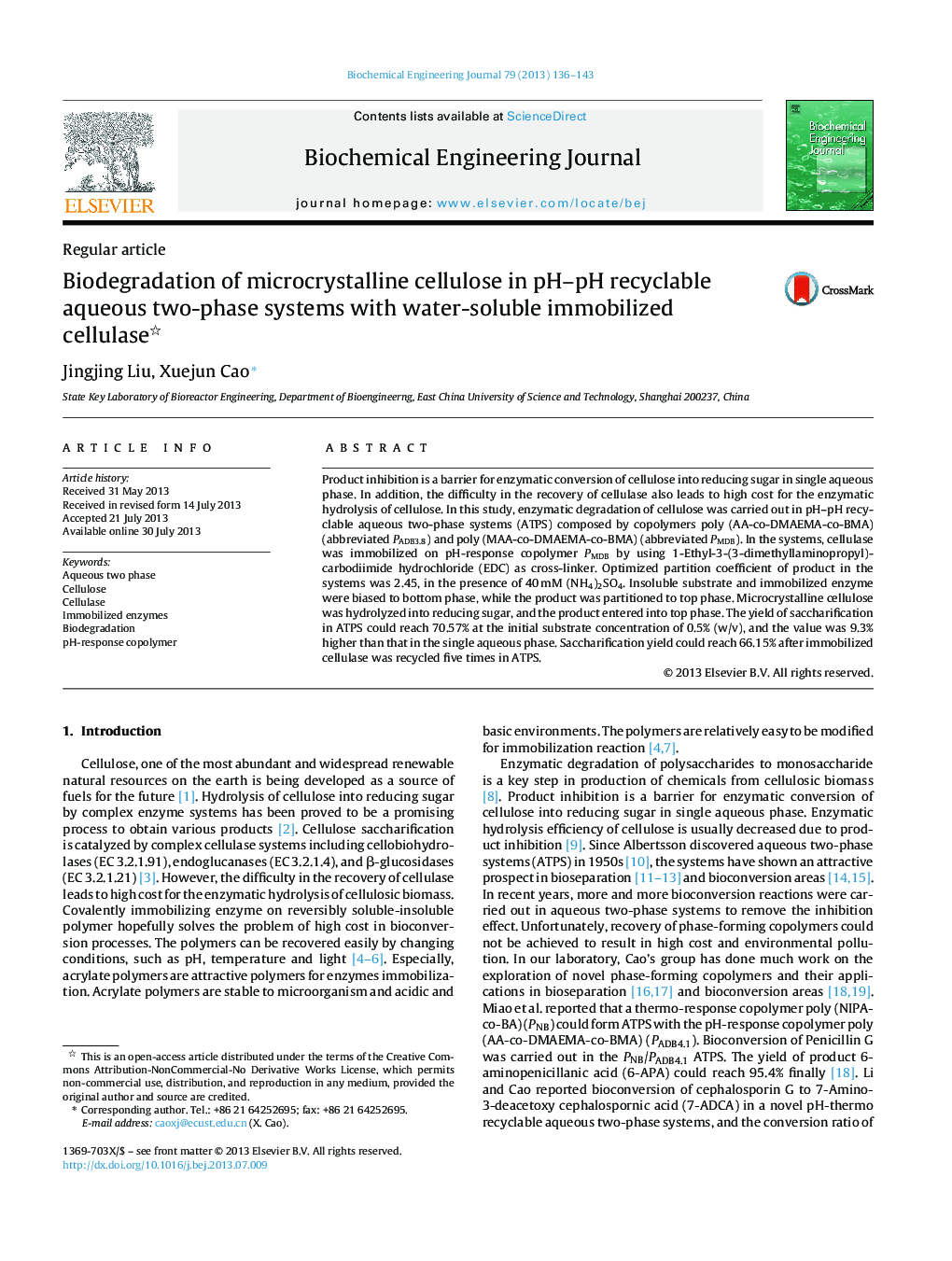| Article ID | Journal | Published Year | Pages | File Type |
|---|---|---|---|---|
| 3277 | Biochemical Engineering Journal | 2013 | 8 Pages |
•ATPS based on charged acrylic copolymers was applied in a bioseparation process.•Two copolymers could be both recycled with over 95% recovery.•Phase transfer bioconversion of cellulose has been carried out in this novel ATPS.•The saccharification yield in ATPS could reach 70.57%.•The yield of saccharification was increased 9.3% in ATPS.
Product inhibition is a barrier for enzymatic conversion of cellulose into reducing sugar in single aqueous phase. In addition, the difficulty in the recovery of cellulase also leads to high cost for the enzymatic hydrolysis of cellulose. In this study, enzymatic degradation of cellulose was carried out in pH–pH recyclable aqueous two-phase systems (ATPS) composed by copolymers poly (AA-co-DMAEMA-co-BMA) (abbreviated PADB3.8) and poly (MAA-co-DMAEMA-co-BMA) (abbreviated PMDB). In the systems, cellulase was immobilized on pH-response copolymer PMDB by using 1-Ethyl-3-(3-dimethyllaminopropyl)-carbodiimide hydrochloride (EDC) as cross-linker. Optimized partition coefficient of product in the systems was 2.45, in the presence of 40 mM (NH4)2SO4. Insoluble substrate and immobilized enzyme were biased to bottom phase, while the product was partitioned to top phase. Microcrystalline cellulose was hydrolyzed into reducing sugar, and the product entered into top phase. The yield of saccharification in ATPS could reach 70.57% at the initial substrate concentration of 0.5% (w/v), and the value was 9.3% higher than that in the single aqueous phase. Saccharification yield could reach 66.15% after immobilized cellulase was recycled five times in ATPS.
